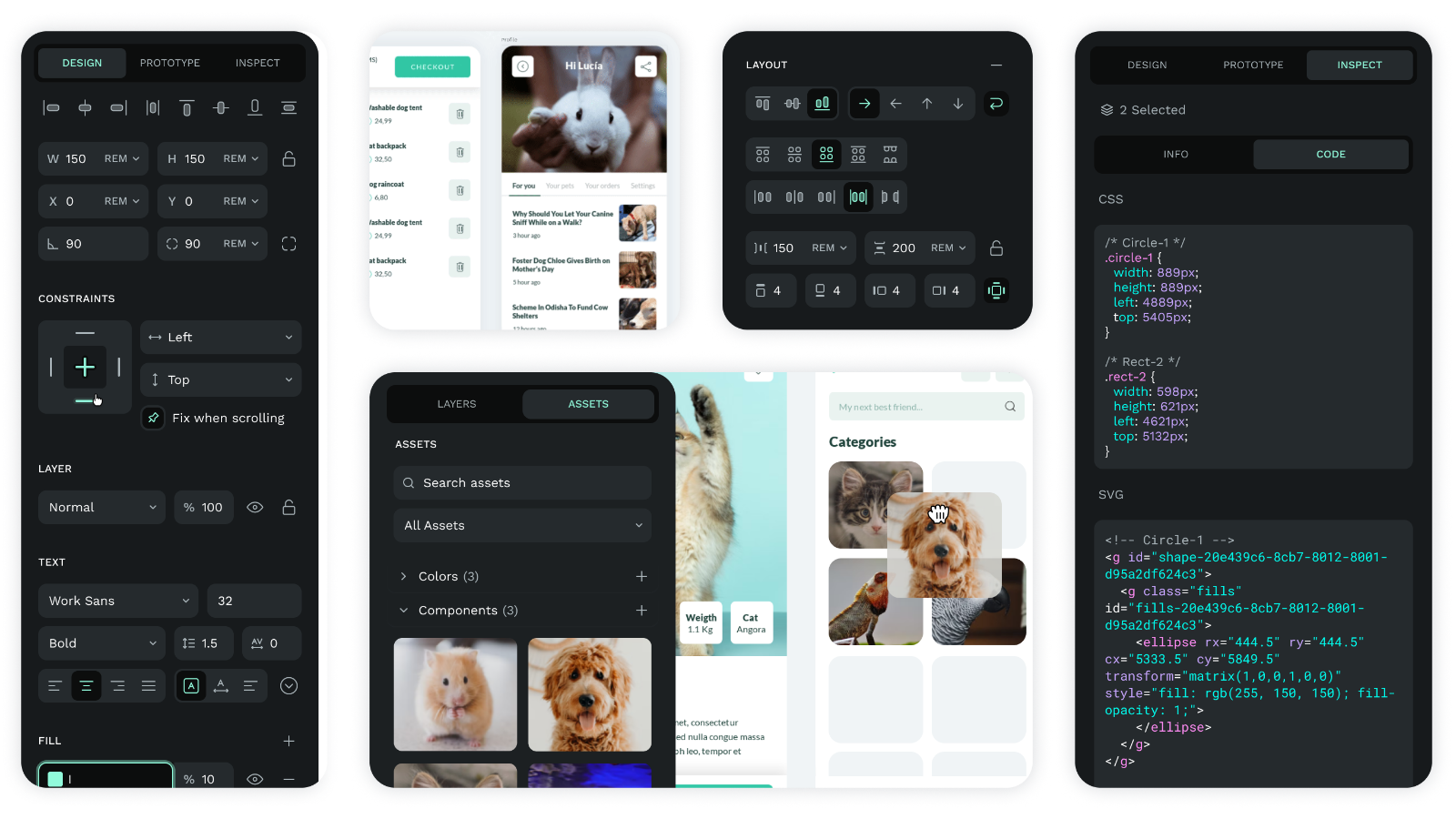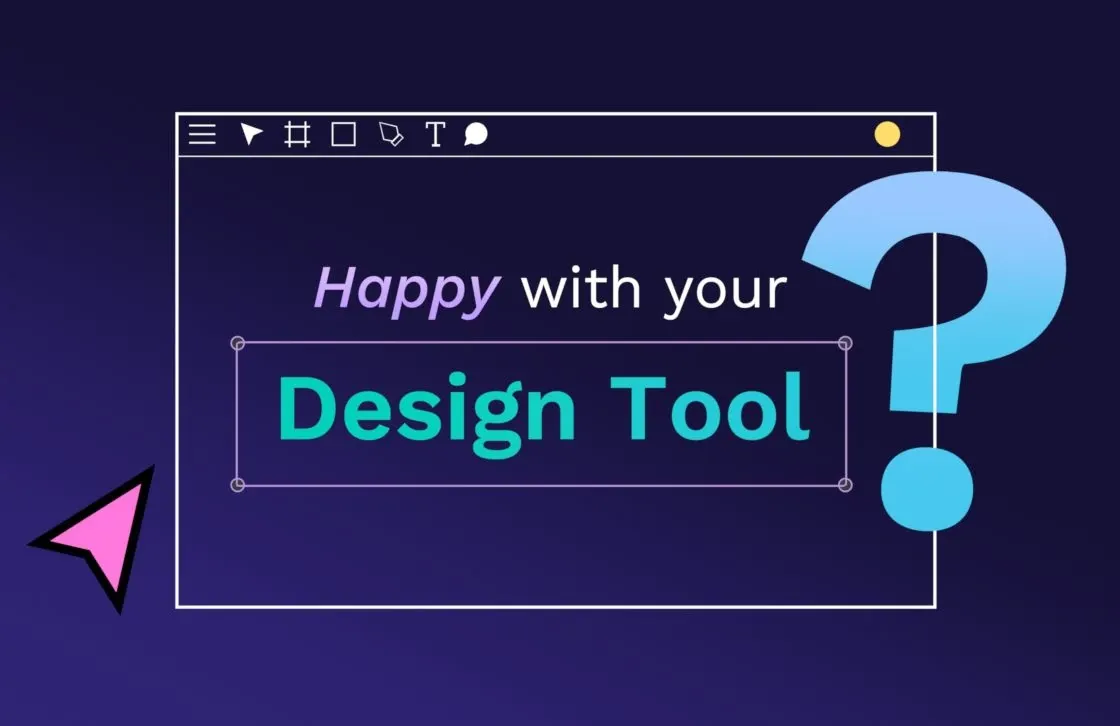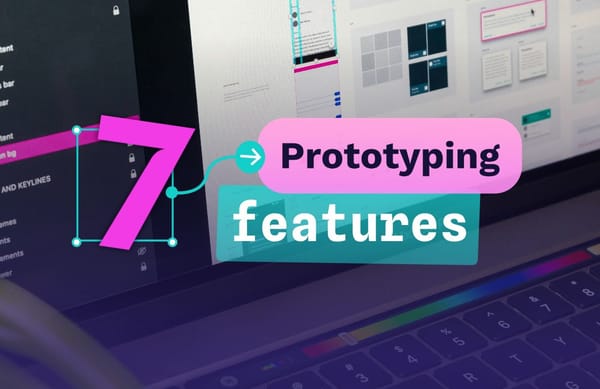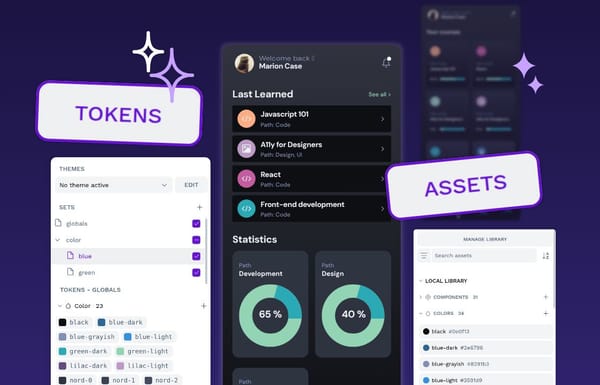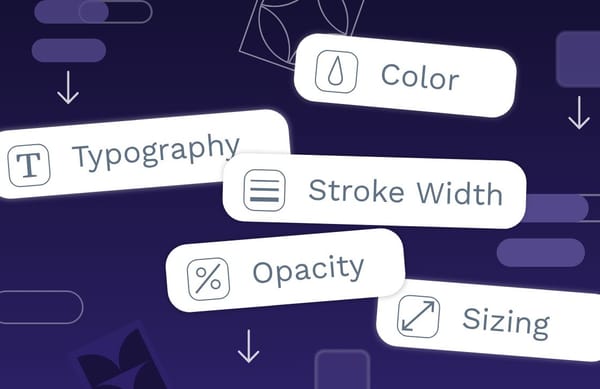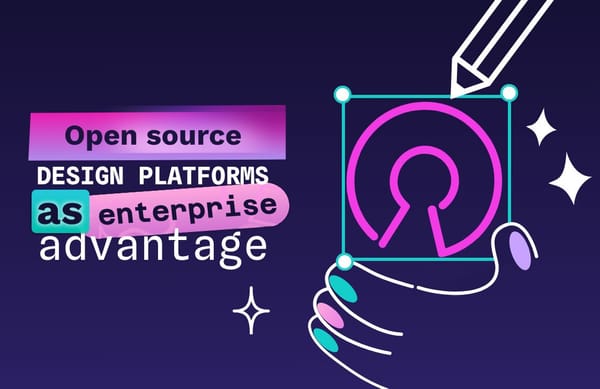Why Open Source?
Many companies are acknowledging the advantages of using Open Source software. One of the main characteristics in open source is that it can accelerate processes of innovation.

Many companies are acknowledging the advantages of using Open Source software. According to the latest report by Red Hat, The State of Enterprise Open Source 2022, the most innovative organisations are the ones that use open source software because it allows enough flexibility to adapt to their own needs. One of the main characteristics in open source is that it can accelerate processes of innovation.
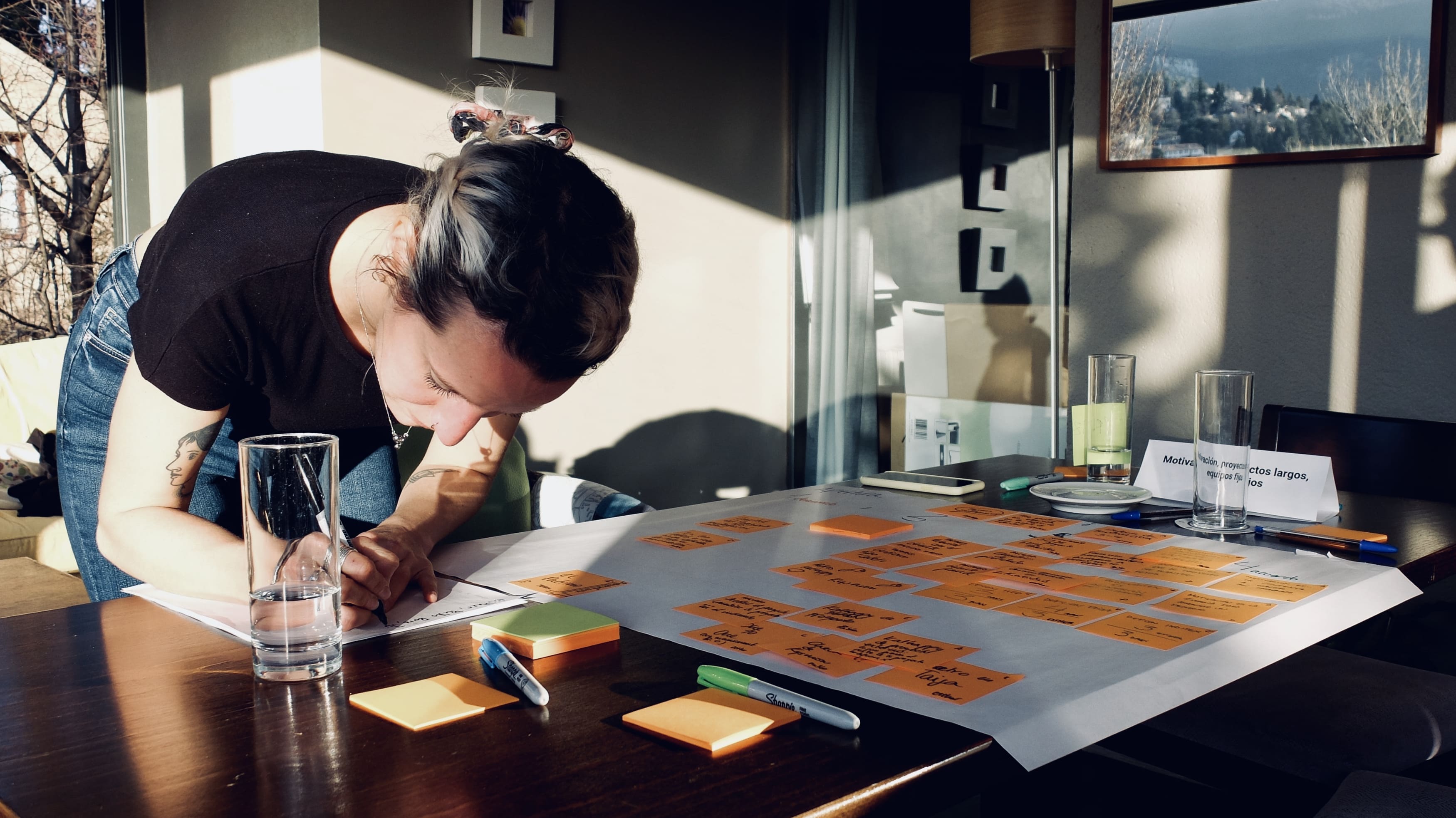
Yes, open source code is safe and excellent in terms of quality
Apart from the flexibility as well as its constant customisation and reviewing capabilities, this technology offers companies and individuals the following:
- Security. Companies worry about the risk of using an open source tool. However, open source software ensures more people can inspect it, localize and fix possible vulnerabilities. Here’s where the user has an active responsibility to keep the software up to date with the latest release.
- Low cost. Most open source projects are free of charge.
- Steady support. Technological communities are incredibly active online, which means that very often there are excellent support options such as forums, documentation and online technical support.
- High quality. This is a key factor in the open source community. Tools are developed by a multinational community of experienced developers with tons of talent and diverse backgrounds, therefore these tools are in constant optimization and receive a wealth of contributions.
Enhancing contributions
Undoubtedly, the best proof of open source software as a great choice for organisations is the contributions from the community to keep improving a tool. Having a community behind an open source tool gives a piece of mind to users, because more frequently technology will keep getting developed and the end product will carry on evolving.
Contributions come all over the world that improve the project with a collaborative spirit, and those improvements are fed back into the community so anyone can benefit from them.
We know well from the experience of belonging to a product development team that contributions are essential because sometimes they suggest improvements that you wouldn’t have imagined.
These contributions come from individuals all over the world that improve the project with a collaborative spirit, and those improvements are fed back into the community so anyone can benefit from them. Therefore, the fact that the core of these tools relies on external contributions enhances the updates and the evolution of such tools which adapt to the needs that may arise with the usage.
There was no professional open source design tool and we created it
At Kaleidos, our mother company, everything we do is open source. We create products with open source software, we contribute to the community and the community feeds back into our products.
We also try to use open source tools only. We are so convinced that we want to support this kind of technology that we even have a criteria list that helps us choose the best tools to work with. In this list we put the tools to the test with questions such as:
- Does the tool’s code have a valid license?
- Does the app make a bad use of my data?
- Does it add enough value to my work? We praise the possibilities the tool provides and whether it impacts on our performance. Though, at Kaleidos we focus more on the values and the philosophy of the software than on the performance, and we accept a certain loss of efficiency for that reason.
“There was no professional open source design and prototype tool, so we created Penpot!”
The design team at Kaleidos came to the conclusion that there was a closed circuit of proprietary tools among designers, developers and clients. There was no professional design and prototype tool in the open source market, so we decided to create one and that’s how Penpot was born!
Penpot’s code is available at open repositories; everybody can access it and collaborate to improve it. In the same way this happened to us internally, we believe that clients as well as design and development teams realised the benefits of our platform, hence they will be helping the design world supporting a tool that is accessible, open and inclusive.
A matter of awareness and trust
When we used to develop for our clients as a software consultancy, we felt we had the duty to make our clients aware of the benefits of open source. Furthermore, we used to include a section in the project NDAs to free some parts of our code. Somehow, we had to evangelize about Open Source.
Currently, at Kaleidos, we focus exclusively on developing our own two products —Taiga and Penpot— which both are open source software. Our communities are already committed to open source and they take an important role to improve our tools.
When using our application, users give us feedback and send us bug issues as well as features suggestions. At Penpot, the way to feed the community is by replying to these queries and launching these new features. As soon as we launch some new features, our community acknowledges it because they’re really useful for them or they’re simply curious about it.
Users can make the contributions via GitHub where we keep our code. Github is an online repository where users can contribute with their suggestions and can create any instance of Penpot.
The community, why do they contribute?
We know from experience about the benefits of having a community with professionals keen to share their knowledge with open source projects. However, what do they receive in return? Contributions can be motivated by different reasons:
- Improving their skills and encouraging innovation. Open Source code allows the practice of several skills: coding, user interface design, graphic design, translations, etc.
- Share the same interests with their peers.
- Learning and teaching. When working on a tech project such as Penpot, you share your knowledge and experience. Sometimes you are a mentor, sometimes you are a mentee.
- Building a reputation. Everything developed in open source is public, therefore contributors will have practical examples to showcase what they can do.
- Becoming a change agent. Contributions can be major or minor, but whatever the effort put into it, open source code helps people feel they are part of the change.
Platforms often provide contribution guides such as Penpot’s, which encompass almost everything one needs to know how to collaborate in the project.
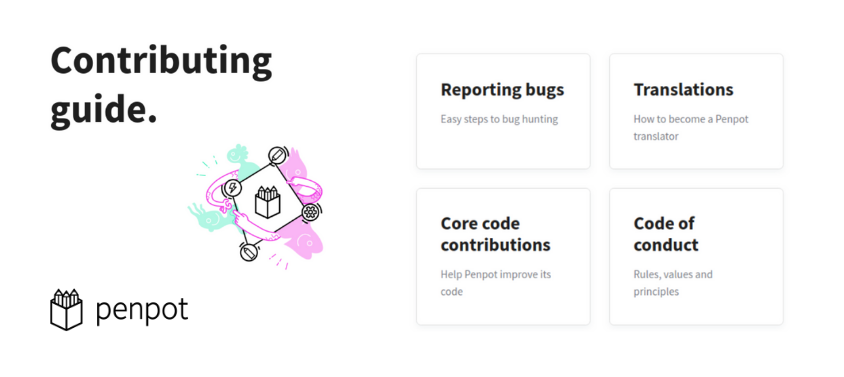
Penpot’s contribution guide
A lot has been gained in the open source world because, not so long ago, the ability of the communities of developers to build high quality, inclusive and open source technologies was underestimated. This recent change in the mindset of companies and its users means not only a very important technological transformation but also a very positive social impact. We should leverage the changing current and support it as much as possible.
Related Blogs
Check out our other blogs, from informative topic guides to tutorials on how to get the most out of Penpot.
